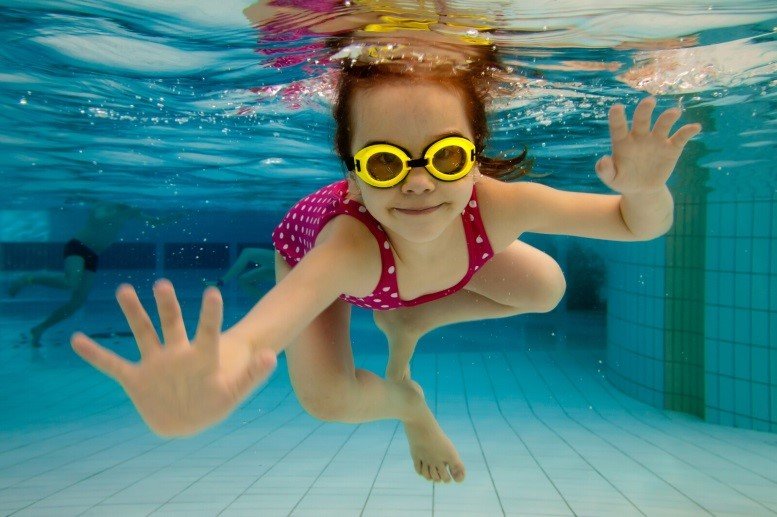
by Fern Shaw | Sep 5, 2019 | Water, water cooler
It’s #MigraineWeek this week and if you have ever experienced a migraine, your blood vessels are probably constricting already. This blogger didn’t experience a migraine until well into adulthood and thought they might be the stuff of legends, that is until she had one.
Migraines affects 1 in every 7 adults globally, according to the World Health Organization and 85 percent of sufferers are female according to the Migraine Research Foundation.
What is a migraine?
According to the NHS, the exact cause of migraines is unknown, but they’re thought to be the result of abnormal brain activity temporarily affecting nerve signals, chemicals and blood vessels in the brain. There is evidence that fluctuations in oestrogen levels can be a migraine trigger, which would explain in part why more women than men experience this condition, however there are a number of other factors that can trigger those more prone to this condition.
What triggers migraines?
There are a number of triggers, including emotional: stress, shock and depression amongst others; physical: poor posture or neck and shoulder tension; dietary: such as dehydration, caffeine and some specific foods such as chocolate and citrus fruit and finally environmental: flickering screens, bright lights or loud noises.
Can they be cured?
Although there currently isn’t a cure for migraines, there is medication available that can help reduce the severity and propensity of these attacks.
Does drinking water more really help?
Absolutely. Considering that our physical make-up is around 70% water, it’s clear that our bodies need the hydration in order to function properly and our brain is no exception. In a previous blog we’ve referred to the importance of keeping our brain adequately hydrated.
What else can you do to reduce migraines?
As much as we all enjoy our caffeine intake, too much coffee, tea or high caffeine content drinks can have an adverse effect on our central nervous system, so if you are prone to migraines, it might be an idea to reduce the amount of caffeine drinks and replace these with water.
Drinking water more may not solve your experiencing migraines, but it can certainly help reduce the frequency.
If there is a shortage of drinking water stations at your premises – contact us at AquAid. We will always give you the best advice about which water cooler is the right fit for your premises, whether at home, work or at school.

by Fern Shaw | Aug 6, 2019 | aquaid, Water Coolers
AquAid definitely offer more than industry standards when it comes to the supplier / customer relationship.
Of course we pride ourselves on the ever important customer service while supplying top quality, highly effective and user friendly range of water coolers, boilers and water fountains – all with a guaranteed next day delivery service.
The ‘more’ is something of which we’re especially proud: the knowledge that an integral part of a successful business model is in giving back and since AquAid’s inception, something we’ve practised. How? By ensuring that a portion of our water cooler sales is donated to sustainable charities.
One of the most recent examples of how this is achieved was when we invited Swiis International to participate in building an Elephant Pump in Africa on their behalf.
“Here at Swiis International (and our sister companies; Swiis Foster Care, Swiis Foster Care Scotland and Swiis Health Care), we are aware that keeping our staff members hydrated will aid them to perform at their very best throughout the working day. As a result, we decided to invest in water coolers from AquAid.
Our partnership with AquAid has also given our company the opportunity to help those less fortunate than ourselves. With each purchase an automatic donation is made to the Africa Trust and these funds are used to build ‘Elephant Pumps’ – a modified version of an age old Chinese rope pulley system. One such pump is currently being installed in Africa on our behalf and it will be a much needed source of clean and fresh drinking water for many.
Our organisation’s name will be proudly displayed on the well and we look forward to adding both photos and feedback from the villagers to our website in the near future.
To date, AquAid have built over 8,000 such Elephant Pumps across parts of Zimbabwe, Malawi and Liberia; and have donated in excess of £16 million to charity.”
We’re delighted that Swiis International agreed to take part in this initiative and we look forward to being able to present a certificate and photo of their well in honour of their participation in the near future.

by Belinda Ollewagen | Jul 29, 2019 | water cooler
Mild dehydration is classified as a 1% loss in body mass and studies have shown that this deficit can result in reduced concentration and awareness levels. Many of us can be mildly dehydrated without even knowing it, which means our performance is not what it should be; but during a week like the one we’ve just had with such sweltering temperatures, it can play havoc with our bodies, mental agility and mood.
A study entitled ‘Mild dehydration impairs cognitive performance and mood of men’ published in the British Journal of Nutrition in 2011, studied the effect that dehydration can have without incurring hyperthermia – the condition of having a body temperature greatly above normal.
The test group of 26 young men, with an average age of 20 years, participated in three randomised trials. Each trial had the men complete three 40 minute treadmill walks at 5.6 km/hour, on a 5% grade in a 27.7 °C environment. During each trial an extensive computerised cognitive test battery was administered examining mood states, vigilance, reaction time, short-term spatial memory and pattern recognition, learning, and logical reasoning, amongst others.
The results showed that the level of dehydration achieved in the study, without incurring hyperthermia, is similar to the level of mild dehydration encountered routinely by adults during a normal work day. This led to adverse changes in vigilance and working memory, and increased levels of tension/anxiety and fatigue.
So yes, being mildly dehydrated definitely impairs productivity, but add to that the extreme heat we’re currently experiencing which can lead to heat stroke and ultimately hyperthermia, and the detrimental results above may become even worse. Which is why it’s imperative at all times, but especially during periods of extreme heat to keep ourselves properly hydrated – make sure you visit your office water cooler multiple times during the day, set an alarm if you must; and increase your water intake while at home as well.
And remember, for all your office water needs, call AquAid – we’re the UK’s leading water cooler supplier and will provide an affordable water solution perfectly tailored to your needs.

by Belinda Ollewagen | Jul 29, 2019 | water cooler
We’ve all been sweltering in the heat wave this week! Understandably we’ve been visiting the office water cooler more often during the day to replenish all the water we’ve lost, but it’s not only our bodies that suffer during these extreme times – our gardens are also worse off for it. And if one considers that heat waves and drought are very much part of our new ‘normal’, then we need to give some thought to better planning, going forward.
Here are a few tips to help with the next heat wave and with the increasing pressure of saving water:
Reduce Lawn Size
Yes it’s obvious, but unless you already have a postage stamp sized lawn, you might want to consider reducing your lawn size. Replacing or breaking up vast expanses of green grass with hard landscaping like stone pathways, a beautiful gazebo or even a super-sized sandbox if you have little ones are all ways of using less water; because let’s be honest, as much as we all love grand expanses of green grass, nothing looks worse than grand expanses of yellow grass.
Water More Effectively
Yes your garden needs water, but it benefits more from a deep watering once or twice a week than it does from a light wetting more frequently – remember that shallow watering leads to shallow root systems all of which reduces the plants vigor and longevity. And it goes without saying that you need to water either early morning or late evening to avoid unnecessary evaporation during the warmer hours.
Mulch More Efficiently
Cover your garden with mulch at least twice a year, it helps your garden retain moisture for longer which means you’ll need to water less frequently. Mulch is typically organic matter which can take the shape of leaves, grass clippings, peat moss, bark chips or straw, to name but a few. Using your lawn cuttings is one of the better ideas, because not only will it help your garden remain wet for longer, but it also means less garden refuge to take away.
So here’s to keeping not only ourselves cool and hydrated during these dreaded heat waves, but to keeping our gardens beautiful too!

by Belinda Ollewagen | Jul 29, 2019 | water cooler
As adults we know when we’re feeling the effects of a heat wave and dehydration, we know it means making far more regular trips to the water cooler and canteen, we know it means conserving our energy; but with children it’s a lot more challenging.
Children don’t perspire as much as adults do, which means their bodies are inclined to overheat more quickly. They don’t always act on their thirst mechanism, which may also not be fully developed in some cases. And they don’t know how to conserve energy, most children generally move at one speed – hyper speed.
So how are you to keep children safe during heat waves like the one we’re just coming out of?
- To begin with, don’t wait for them to start showing signs of fatigue and lethargy – by then it’s too late and they may already be dehydrated, instead give them water at regular intervals during the day.
- Keep time outdoors limited, unless it means paddling or swimming in a pool, but even then you’ll need to keep a watchful eye, because the excitement of water play can initially mask the symptoms of overheating.
- Make water intake fun, add sliced fruits or berries to their water, keep lots of frozen juice lollies and juicy fruits handy – you can also try fancy ice cubes in their favourite superhero shapes and a kiddies water cooler just for them.
- If they’re older and have access to a smartphone (even if it’s yours) or a tablet, then consider using an app that encourages water intake, something like Plant Nanny is ideal because it’s highly interactive – you choose a seedling and help it grow by tracking how much water you drink.
By being careful and ensuring they drink water as regularly as you do, you’ll make sure they breeze through these heat waves without feeling any adverse effects.





